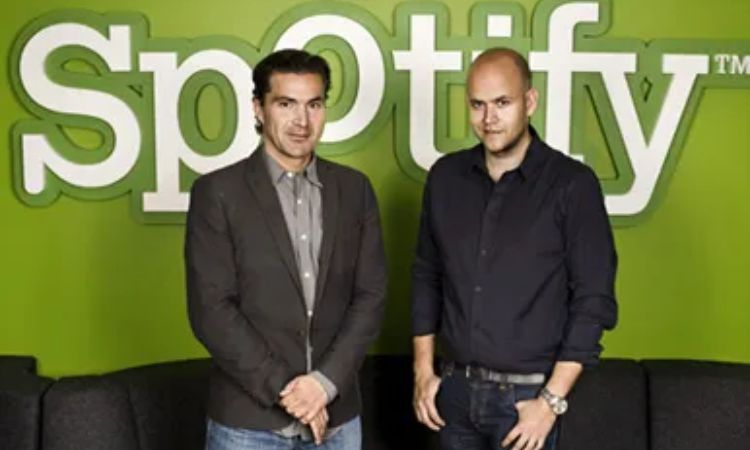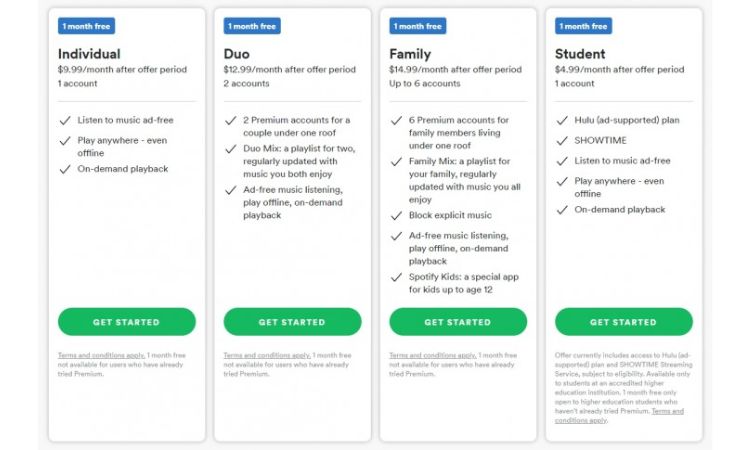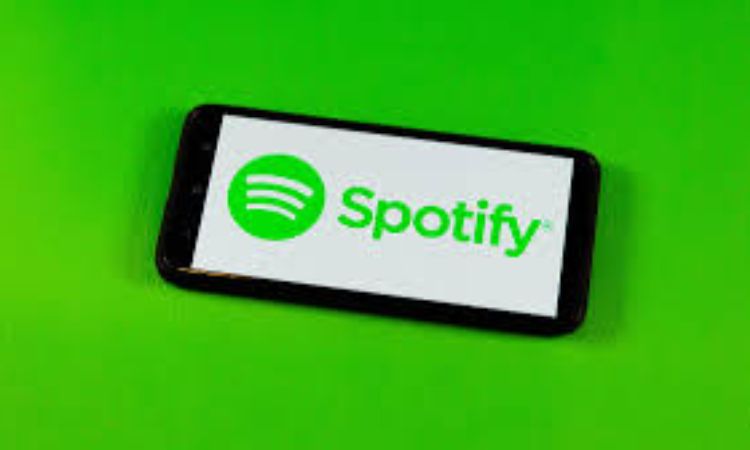Since the beginning of the contemporary and digital periods, there has been a significant shift that may be described as revolutionary within the realm of musical composition. People have begun moving away from items in their physical forms and towards those in their digital ones. Consequently, this has contributed to the meteoric surge in popularity of music streaming through digital platforms. Now we have Spotify, which is most likely the most popular music streaming site out there.

Spotify was established in Sweden, and it revolutionized the manner in which people listened to music. Despite the fact that the firm did not immediately achieve such levels of recognition, it did go through its share of difficulties. In 2006, Daniel El and Martin Lorentzon laid the groundwork for the company by launching it as a little business. In this essay, we take a comprehensive look at the myriad of factors that contributed to Spotify’s meteoric rise to fame and its phenomenal expansion over the last few years.
Spotify, the beginning:
1. The inception of an idea:
Spotify as a thought can be traced back to the mid-2000s, when Daniel Ek, a Swedish businessman, was pursuing a conflict against music robbery and the limits of music dissemination. During this time, a thought illuminated his brain, Why not make a stage on which everybody can appreciate paying attention to their #1 performers and specialists.
2. The serendipitous encounter:

Daniel Ek and MartinLorentzon
Back in 2005, Ek and Martin Lorentzon, both entrepreneurs from Sweden, had an unexpected interaction. Lorentzon, with a technology background and a keen curiosity about the music industry, crossed paths with Ek. This coincidental meeting would eventually lead to the inception of what we now know as Spotify. Lorentzon fully shared Ek’s vision of creating a digital music service tailored to the shifting dynamics of music consumption.
3. The Birth:
In 2006, Ek and Lorentzon teamed up to make another stage in Stockholm, Sweden. Their common goal formed into a help zeroed in on extending music accessibility and upsetting the music business’ income approach. The expression “Spotify” was picked by consolidating “spot” and “distinguish,” featuring the stage’s main goal to help clients investigate and perceive novel music.
4. Facing the Licencing Challenges:
All along, Ek and Lorentzon confronted the difficult task of protecting permitting concurrences with significant record marks. Persuading these industry goliaths to embrace the streaming model represented a critical test. Be that as it may, through determined discussions and a creative way to deal with income sharing, Spotify slowly acquired the help of basic names.
5. Launch and Early Reception:
In October 2008, in the wake of defeating authorization snags, Spotify sent off. At first accessible only in Sweden, the stage’s exquisite connection point, broad music inventory, and advantageous streaming experience prompted its fast ubiquity. The “freemium” model offered free and premium membership choices and attracted clients with assorted inclinations and spending plans.
6. International Expansion:
The progress of Spotify in Sweden served as a springboard for worldwide expansion. In 2009, the help appeared in the Unified Realm, trailed by a rollout in a few European nations. Vital associations with telecom administrators denoted the stage’s extension, improving availability and advancing reception.
How Spotify Innovated the Music Streaming Concept:

Spotify’s precarious rise is fanned out in major areas of strength for its music use perspective. Spotify introduced an enrollment-based model that yielded clients unhindered agreement to a wide music library for an undeniable month-to-month charge when standard music scattering models were at an intersection point. This strong change liberated music fans from the shackles of authentic media and the trouble of burglary, conveying having music old.
Introduction to music streaming:

The music business was amidst a mechanized turmoil during the 2000s. The advancement of record sharing and burglary upset regular pay models, inciting declining genuine assortment bargains. In this climate, Spotify, a Swedish startup, emerged with a momentous vision to change how people experienced and consumed music.
Subscription-Based Model: Redefining Access
The inventive center of Spotify was its membership-based plan of action. As opposed to the standard worldview of buying individual tracks or collections, Spotify presented a progressive idea: limitless admittance to a tremendous music library for a decent month-to-month charge. This shift from possession to get significantly altered the manner in which individuals saw music, making it an encounter that could be capable without actual media requirements.

The Freemium Strategy:
Key to Spotify’s development was its “freemium” plan of action. This technique offered two unmistakable help levels: a complementary plan with promotions and limitations and a top-notch level with advertisement-free tuning in, disconnected playback, and improved sound quality. This two-layered structure democratized music utilization by tending to thrifty and upscale buyers.
The Personalisation Algorithm:
Spotify’s advancement stretched out past access and evaluation. The stage bridled the force of modern calculations to customize the client experience. Spotify organized redid playlists and suggestions by dissecting client conduct, inclinations, and connections. The “Find Week after Week” playlist, a trademark included, exemplified this development, acquainting clients with new music custom-made as they would prefer.
At the pinnacle of Spotify’s personalization dominance stands the surprising “Find Week after Week” playlist. This wonder of Artificial Intelligence fills in as a melodic compass, exploring clients toward new tracks and specialists that reverberate with their remarkable hearable tendencies. This combination of innovation and melodic investigation consistently impels audience members into the job of venturesome sonic swashbucklers.
Integrating it to Mobile:

Spotify perceived the developing meaning of cell phones in individuals’ lives. By sending off a versatile application, the stage engaged clients to convey their music with them any place they went. This portable mix extended openness as well as changed music utilization into a consistent and incorporated piece of day-to-day existence.
3. Empowering Artists and Democratising Music Distribution:
Spotify’s groundbreaking repercussions reach out past the area of buyers; they penetrate the actual texture of the music business. The stage has arisen as a power of democratization, giving trying and laid-out specialists a stage to show their inventive ability. Spotify has successfully democratized music conveyance, bypassing the conventional space of record marks and giving craftsmen direct admittance to a worldwide crowd.
This democratization tracks down its apotheosis in the power of playlists. Free performers end up pushing into the spotlight by gracing organized playlists, a possibly extraordinary jump that can sling their creations to the ears of millions. Spotify’s algorithmic playlist biological system rises above the limitations of conventional advancement, engaging specialists to prearrange their directions.
4. Impact on the Music Industry:
Spotify’s brilliant climb proclaimed a change in perspective in the actual bedrock of the music business’ income model. The progress from collection deals to streaming incited a reexamination of how specialists, names, and businesses created income. This change, while extraordinary, was brimming with difficulties; it proclaimed a dependable income stream for specialists, lyricists, and the more extensive melodic environment.
Transforming Revenue Models:
Spotify’s entrance into the music business resonated a long way past innovation. It catalyzed a seismic change in how specialists, record names, and the whole business created income. The customary model of collection deals gave way to another worldview revolving around streaming, always adjusting the scene of music’s financial aspects.
A Reliable Revenue Stream for Artists:
One of the main effects of Spotify’s model was the making of a reliable income stream for specialists. Simultaneously, the music business had for some time been wrestling with declining collection deals and uncontrolled robbery, and streaming offered a predictable pay source. The more a craftsman’s music was poured, the more income they created — an obvious takeoff from the unstable idea of collection deals.
Negotiating With Record Labels:
Getting permit concurrences with significant record distributors was a difficult undertaking. Spotify needed to convince these record names that its streaming model could be a feasible and supportable wellspring of income. As the business attempted to grasp the new income model and what it would mean for its main concern, dealings were complex and every now and again extended.
Global Expansion and Cultural Resonance:
The globe-spreading impression of Spotify represents its daring aspiration. By fitting substance to local sensibilities, Spotify has cultivated a different music inventory and worked with a melodic discussion that rises above borders. This try has incited multifaceted melodic discoursed, enhancing the worldwide social woven artwork.
Tailoring Content to Regional Tastes:
One of Spotify’s basic worldwide development techniques was adjusting its substance to take special care of territorial inclinations. Perceiving that music is profoundly attached to culture, Spotify arranged playlists and proposals that reverberated with the remarkable melodic sensibilities of every district. This approach guaranteed that clients in various regions of the planet could track down music that felt natural and genuine.
1. Fostering Cross-Cultural Dialogue:
As Spotify’s impact extended across the mainland, it empowered remarkable culturally diverse melodic connections. The openness of audience members to classifications and specialists they could never have in any case experienced cultivated a feeling of interest and investigation. This melodic trade helped destroy social boundaries and develop associations between networks.
2. Harmonizing the World’s Soundtrack:
Spotify’s worldwide development and social reverberation changed the stage into something beyond a music web-based feature — it turned into a vessel for social trade, multifaceted comprehension, and the festival of variety. By perceiving the all-inclusiveness of music while regarding its provincial subtleties, Spotify keeps on winding around an embroidery that fits the world’s aggregate soundtrack.
3. Navigating Competition and Evolution:
Spotify confronted savage rivalry from industry juggernauts like Apple Music and Amazon Music in a period while music streaming stages multiplied. However, its rising and proceeding with superiority can be ascribed to its deftness and undaunted commitment to development. Embracing digital broadcast reconciliation, developing restrictive substance organizations, and putting resources into unique programming braced Spotify’s situation as an inexhaustible industry pioneer.
Conclusion:
The odyssey of Spotify embodies the groundbreaking force of advancement and innovation in reshaping whole businesses. Spotify has made a permanent imprint on the melodic scene by democratizing music utilization, enhancing craftsmen’s voices, and supporting multifaceted melodic exchanges. Its job in rethinking income ideal models, spearheading mechanical advances, and encouraging cross-line melodic discussions cements its situation as a trailblazer in the contemporary diversion scene. As Spotify progresses, its journey fills in as a wellspring of inspiration, moving future business people, craftsmen, and visionaries to use the cadence of development in making the harmonies out representing things to come.















